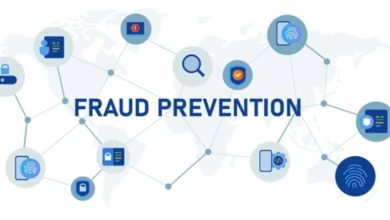The Rise of Cybercrime Targeting Older Adults: Understanding the Threat Landscape to Prevent Attacks

Cybercrime against older adults is on the rise, with criminals increasingly targeting this demographic due to perceived vulnerabilities. According to the FBI Internet Crime Report 2022, older adults lost a staggering US$3 billion to cybercrimes, marking an 11% increase from the previous year. The most common types of cyber threats targeting older adults seemed to be phishing, tech support scams, and social engineering attacks.
The financial impact of such cybercrime on the elderly is heavy – according to Statistica, in 2023, individuals aged 60 and older in the United States lost more than US$1.2 billion in online investment fraud, an increase from US$990 million in the previous year. Tech support scams ranked second, causing the victims around US$590 million in losses. Romance scams followed third, registering nearly US$356 million in losses in the examined year.
A recent 2023 study by the Pro Senectute, an organisation for the elderly, reveals that nearly 80% of people over 55 in Switzerland have experienced some form of fraud attempt. Alarmingly, 20% of older Swiss citizens have lost a total of about 675 million Swiss francs (around US$739 million) over the past five years. This represents a sharp rise, with annual losses increasing by over 60% compared to the figures from the first study conducted five years ago.
Most of the elderly are not proficient in using computers as these were not as available as in the past, unlike today, where everybody lives in a digital world, living our lives online, from banking to medical consultations. As the topic of cyber security was not as prevalent as in the past, seniors are unfortunately less aware of cyber threats and, in many cases, lack the tools and experience to identify attacks and fraudulent attempts. In today’s world where personal information is stolen or even sold on the Dark Web, cybercriminals can use these to exploit these vulnerable groups of seniors.
To help overcome challenges in preventing such cyber risks experienced by the Elderly, we explore these emerging threats, the psychological aspects that make older adults more vulnerable, and offer practical tips for staying safe online.
Emerging Cyber Threats Targeting Older Adults
Cyberattacks on the population and businesses come in different forms – from ransomware and hacktivist attacks to more common social engineering scams such as financial or love scams.
When looking at the common cyberattacks suffered by the elderly, phishing remains one of the most prevalent attacks. These scams often come in the form of emails or messages that appear to be from legitimate sources, such as their banks or government agencies, tricking victims into divulging sensitive information. FBI Internet Crime Report 2022, noted that phishing was the most reported crime among older adults, with over 300,000 complaints filed.
Another common means of attacking the elderly is Tech Support Scams. This scam occurs when scammers pose as tech support agents from well-known companies like Microsoft or Apple. They often contact older adults via phone calls or pop-up alerts on their computers, claiming that their devices have been infected with malware. The goal is to convince the victim to pay for fake services or gain remote access to their computer to either steal information or install malware. In 2022, tech support scams cost older Americans over US$588 million, a sharp increase from previous years.
Social Engineering Attacks are another very common means of tricking the elderly into parting with their details or finances. Social engineering attacks manipulate victims into breaking normal security procedures, often leveraging emotional triggers such as fear, urgency, or a false sense of trust. For example, scammers may pose as grandchildren in need of money or claim to be a charity seeking donations. These attacks are particularly effective against older adults who may be less familiar with digital communication norms or eager to help family members.
Psychological Vulnerabilities of Older Adults
Older adults are often targeted by cybercriminals as this group of seasoned people are seen as ‘easy targets’, with less knowledge or experience of online tools, making them more susceptible to scams.
Somehow, it is also surmised that the elderly generally have a more trusting nature. Older adults, especially those from generations that grew up without the internet, tend to be more trusting of authority figures and official-looking communications. This trust can make them easy targets for scams that mimic reputable organisations.
Many older adults experience social isolation, which scammers exploit by posing as friendly, understanding voices over the phone or online. This emotional manipulation can lead to quick compliance with requests, especially in romance scams or fraudulent investment schemes.
The main reason though is a lack of digital literacy as even though many older adults have embraced technology, they may lack awareness of the latest cyber threats or understanding of basic security measures, making them more vulnerable to such sophisticated scams. With hackers leveraging AI to create more realistic emails or worse, vishing or fake videos, the older generation is at the mercy of these unscrupulous criminals, wanting to capitalise on their details or finances.
Preventing More Attacks on Seniors
To help older adults protect themselves from further attacks online, Check Point is suggesting some key tips to ensure better safety for our older family members:
- Safe Browsing: Always remind the seniors to verify the authenticity of websites before entering personal information. Look for a padlock symbol in the address bar, indicating a secure connection.
- Beware of Phishing: Seniors must be cautious of unsolicited messages, emails, or texts that ask for personal information or promise rewards. Verify the sender’s legitimacy independently before responding.
- Protect Your Account: If seniors receive suspicious requests to change their passwords or account details, do not act immediately. Remind them to report such requests to the bank or service provider using official contact information to check the authenticity of such requests.
- Download Apps Safely: Only download apps from reputable sources like the Google Play Store or Apple App Store to avoid malicious software.
- Identify Suspicious Activity: Be alert to messages that create a sense of urgency, such as requests for immediate payment or account verification. Scammers often use urgency to trick victims into acting without thinking.
- Secure Your Financial Information: Never share sensitive information like credit card numbers over the phone unless they initiate the call and trust the other party. Be especially wary if pressured to provide such details, no matter the circumstances eg. To take advantage of a flash sale or to invest.
- Use ATMs Wisely: Choose ATMs located in well-lit, secure areas to minimise the risk of skimming devices stealing credit card information.
- Education on cyber security awareness: Several countries have dedicated cyber teams focused on educating older adults about online threats. The UK’s National Cyber Security Centre (NCSC) runs “Cyber Aware” campaigns, the U.S. Cybersecurity and Infrastructure Security Agency (CISA) offers targeted workshops, and Singapore’s Cyber Security Agency (CSA) engages seniors through public outreach programs to educate them on such online threats.
Said Rebecca Law, Country Manager, Singapore, Check Point Software Technologies, said “The surge in cybercrime targeting older adults highlights a critical intersection of technology, psychology, and societal responsibility. Older adults are not just victims of scams; they are often overlooked stakeholders in the cyber security conversation. The emotional toll, financial loss, and erosion of trust caused by these attacks extend far beyond the immediate impact, affecting families and communities.”
“It’s crucial to empower them with the knowledge and tools needed to protect themselves online. By raising awareness and promoting digital literacy, we can help our older generation navigate the digital world more safely and confidently. Empowering this demographic isn’t just about preventing loss; it’s about preserving dignity and independence in a rapidly evolving digital landscape,” she continued.




